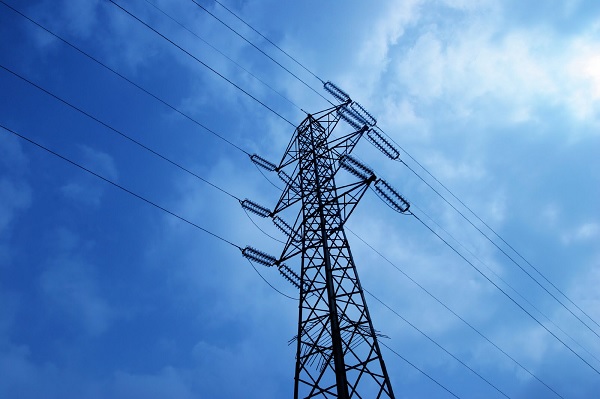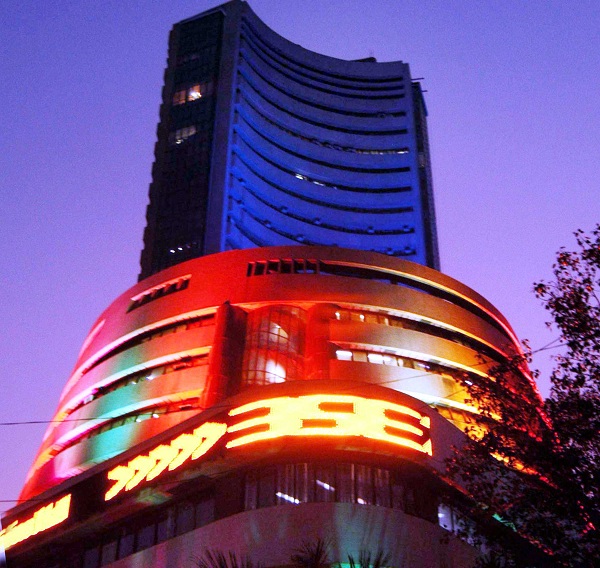
by admin | May 25, 2021 | Opinions
 By Amit Kapoor,
By Amit Kapoor,
In a respite to the Modi government, which has been facing the heat over dismal economic numbers, the World Economic Forum (WEF) study on global competitiveness for 2017 commended the improving quality of institutions in India, especially in terms of improved efficiency of public spending in the last few years. This was despite the fact that India slipped a place to rank 40 out of a total 137 countries in the Global Competitiveness Index 2017-18.
However, the WEF has clarified that it has changed its methodology this year and the rankings are not comparable with those of last year. Moreover, it also pointed out that this is India’s highest score ever with the new methodology (4.6 compared to 4.5 in the previous year). The country’s score has improved across most indicators of competitiveness, especially infrastructure (66th, an improvement of two points over last year), higher education and training (75th, up six) and technological readiness (107, up two), which is a reflection of recent public investment in these areas.
India has also ranked the highest among all South Asian countries with the next highest being Bhutan and Sri Lanka ranked at 85. Among the BRICS nations, China (27) and Russia (38) rank above India while South Africa and Brazil are placed at 61 and 80. In a major hopeful boost to the dwindling India growth story, the report stated that among the emerging markets that were seen to have great potential in the early 2000s, Brazil and Turkey have lost much of what they had gained before 2013, while China, India and Indonesia continue to grow strong.
The report also gives some useful insights about the growth trends of the Indian economy. First, among the emerging economies, it finds that India and China are gradually developing into major centres of innovation. In a recent study of geographical clusters generating the most patents, three Indian cities appeared in the top 100 with Bengaluru at 43 (with patent activity focused on computer technology), Mumbai at 95 and Pune at 96 (with both registering among the most patents in organic chemistry). Due to such an improvement in the innovative environment within India, the WEF rankings place India at 29 on the innovation pillar for competitiveness.
Since innovation is a major determinant of the long-term growth trends of an economy, these figures bode well for India’s future prospects. However, the improvement comes with a caveat. It has been seen that emerging economies that are doing well in innovation are leaving large sections of the population behind since they are not technologically equipped.
The level of technological readiness of individuals and firms in countries like India and China are relatively low. This indicates that the innovative space in these countries is not quite inclusive in nature. Along with innovation, it is necessary to ensure that more people and firms have the required means to access and make use of the new technology. India fares poorly on that front. As mentioned, India ranks a lowly 107 in technological readiness. As long as there remains such a disconnect between technological strength and technological readiness, the gains from it cannot be shared across the wider economy and will only lead to an unequal society. So, India urgently needs to act upon technological readiness to make its economy competitive on a larger scale.
The second insight from the Global Competitiveness Index is the performance of the health and primary education pillar, in which India ranks at 91 — second-worst only to technological readiness. It cannot be overstated how poor health and education outcomes can affect the competitiveness of a country and its citizens. India has always had a history of poor public investment in health and primary education and it pays a hefty cost for this in terms of its competitiveness. Such a continued trend in the long run will result in an unequal and mostly unproductive society where only the well-off, who manage to provide nutrition and education for their children, will thrive.
Thirdly, the WEF Executive Opinion Survey reveals that the private sector still considers corruption to be the most problematic factor for doing business in India. This finding puts a question mark over the effectiveness of the government’s attack on corruption over the last few years. Lack of access to financing and tax regulations also remain the prime problems for setting up a business in India. The former might gradually subside when the problems of non-performing assets (NPAs) with banks is remedied, while the latter might change once the economy adjusts to the newly-implemented Goods and Services Tax (GST). However, corruption will continue to remain an impediment to the country’s competitiveness and its long-term growth.
Therefore, India might be improving on the competitiveness index owing to high public investment in some crucial sectors, but large ailments within the economy still remain. Problems of corruption and a gross negligence of health and education sectors have always defined India’s competitiveness. A recent growth in innovative tendencies seemed to be a saving grace but as it turns out, there seem to be distributive issues. How India handles these concerns will determine its future.
(Amit Kapoor is Chair, Institute for Competitiveness, India. The views expressed are personal. He can be contacted at amit.kapoor@competitiveness.in and tweets @kautiliya. Chirag Yadav, researcher, Institute for Competitiveness, India, contributed to the article.)
—IANS

by admin | May 25, 2021 | Business
 New Delhi:(IANS) The industrial output index for India’s eight core industries registered a rise in December, pushed up by higher coal, refinery products, fertilizers, cement and electricity output.
New Delhi:(IANS) The industrial output index for India’s eight core industries registered a rise in December, pushed up by higher coal, refinery products, fertilizers, cement and electricity output.
The index representing major infrastructure sectors had recorded a fall in November 2015.
The index showed a rise of 0.9 percent in December 2015 on a month-on-month basis, compared to the 1.3 percent decline in November, official data showed on Monday.
The core industries grew 3.2 percent in October last year.
However the select factory output index for December is less than the growth of 3.2 percent achieved during the corresponding month in 2014, a commerce ministry release said.
This index comprises 38 percent of the total weightage of items included in the Index of Industrial Production (IIP).
Its cumulative growth from April to December 2015-16 stood at 1.9 percent, as compared to 5.7 percent during the corresponding period of 2014-15.
Out of the eight core industries, fertilizers and coal reported healthy output numbers. However, production of oil, natural gas, and steel dwindled in the period under review.
Electricity recorded 2.7 percent change in December 2015 as compared with 4.8 percent in December 2014. Its cumulative index during April to December 2015-16 decreased by six percent over the corresponding period of previous year.
Distilling of refinery products, the third most important component as per weightage, increased by 2.1 percent in December.
Extraction of crude oil, which has a 5.21 percent weightage in IIP, fell by 4.1 percent during the month under review in comparison with 1.4 percent decline of December 2014.
Coal mining, with a 4.38 percent weightage, increased by 6.1 percent.
The sub-index for natural gas output, with a weightage of 1.71 percent, slipped by 6.1 percent in the month under consideration.
The fertilisers manufacturing with a weightage of only 1.25 percent rose exponentially by 13.1 percent.
Steel declined by 4.4 percent in December 2015.

by admin | May 25, 2021 | Corporate, Corporate finance, Finance, News
 Mumbai:(IANS) Weak global cues dented investor sentiments at the Indian equity markets, leading to a barometer index closing flat on Monday.
Mumbai:(IANS) Weak global cues dented investor sentiments at the Indian equity markets, leading to a barometer index closing flat on Monday.
The S&P BSE Sensex, which opened at 26,107.98 points, provisionally closed at 26,194.67 points (at 3.30 p.m.) — down 24.24 points or 0.09 percent from the previous day’s close at 26,218.91 points.
The Sensex touched a high of 26,233.46 points and a low of 25,972.54 points in the intra-day trade.
The barometer 30-scrip sensitive index (Sensex) of the S&P Bombay Stock Exchange (BSE) had gained 255 points or 0.98 percent at 26,218.91 points (on Friday, September 18).
A flat trajectory was also observed at the wider 50-scrip Nifty of the National Stock Exchange (NSE). It fell marginally by 4.80 points or 0.06 percent at 7,977.10 points.
Market observers pointed out that weak global cues emanating out of the Asian markets impacted investor sentiments.
“Due to the absence of any fresh domestic triggers, the markets were solely focused on the international trends. The subdued Asian markets and the lower closing of the US markets on Friday impacted investors’ sentiments here,” Anand James, co-head, technical research desk with Geojit BNP Paribas Financial Services, told IANS.
Other market watchers said the global growth concerns couple with a possible US interest rate hike in the later part of 2015 also played negatively on investors sentiments
“The uncertainty related to the US Fed rate hike continues to worry investors coupled with growth concerns,” Vaibhav Agrawal, vice president, research, Angel Broking, told IANS.
“We expect the pressure to continue ahead of the F&O (futures and options) expiry this week.”
Among the Asian markets, Japan’s Nikkei dropped by 1.96 percent, Hong Kong’s Hang Seng fell by 0.75 percent. However, Shanghai Composite Index closed higher by 1.91 percent.
Sector-wise, banking, capital goods and automobile managed to stay afloat. However, fast moving consumer goods (FMCG), consumer durables and oil and gas stocks declined.
The S&P BSE banking index augmented by 167.57 points, capital goods index rose by 71.73 points and automobile index increased by 40.95 points.
The S&P BSE FMCG index receded by 61.56 points, consumer durables declined by 33.65 points and oil and gas index was lower by 27.66 points.

by admin | May 25, 2021 | Corporate, Corporate finance
 Mumbai:(IANS) Volatility prevailed in the Indian equities markets on Wednesday with negative cues from the Asian exchanges continuing to dampen investor sentiment and leading a barometer index to shed 219 points during the late-afternoon trade session.
Mumbai:(IANS) Volatility prevailed in the Indian equities markets on Wednesday with negative cues from the Asian exchanges continuing to dampen investor sentiment and leading a barometer index to shed 219 points during the late-afternoon trade session.
The barometer 30-scrip sensitive index (Sensex) of the Bombay Stock Exchange (BSE) was trading 219.49 points or 0.85 percent down (at 3.00 p.m.).
Bearish sentiments also dented investors’ confidence at the wider 50-scrip Nifty of the National Stock Exchange (NSE). The CNX Nifty was trading 60.20 points or 0.77 percent down at 7,725.65 points.
The S&P BSE Sensex, which opened at 25,891.95 points, was trading at 25,476.95 points during the late-afternoon session — lower by 219.49 points or 0.85 percent from the previous day’s close at 25,696.44 points.
The Sensex touched a high of 25,939.37 points and a low of 25,459.09 points in the intra-day trade so far.
Analysts observed that the initial gains of over 240 points came on the back of the government’s decision — announced by Finance Minister Arun Jaitley on Tuesday — that minimum alternate tax (MAT) will not be imposed on foreign portfolio and institutional investors.
“The Indian markets made initial gains after the government accepted Justice A.P. Shah Committee report ending the uncertainty on the applicability of MAT on foreign investors,” Vaibhav Agrawal, vice president, research, Angel Broking told IANS.
“This helped soothe frayed nerves of FIIs and is positive for the markets.”
Notwithstaning the positive announcements on MAT, the initial gains receded on account of continued weakness in the Asian markets coupled with less-than-expected macro data.
“The high intra-day volatility was caused due to the bearish cues coming in from the Asian markets. Investors are nervous about the evolving situation in China,” Anand James, co-head, technical research, Geojit BNP Paribas, told IANS.
As per James, volatility is also being flared-up due to expectations of new measures by the Chinese government and central bank to stabilise their markets. This in turn will further put pressure on the yuan and subsequently on the rupee value.
The massive implosion in the Chinese markets which has by some estimates eroded 40-45 percent of the entire stock value coupled with yuan devaluation and lower factory out has spooked the world markets.
“Oil prices are also a cause of worry. As they rose exponentially by around $10 in the last 3 days or so. Sentiments are also dampened — as investors make sense of the slowdown in the growth, purchasing mangers index (PMI) and eight core industries (ECI),” James added.
The Q1 GDP came in at 7 percent, showing signs of slowing vis-a-vis the 7.5 percent expansion during the previous quarter.
The ECI for select factory output slowed to 1.1 percent growth in July from an increase of 3 percent in the previous month.
The Nikkei India Manufacturing PMI (Purchasing Manufacturers Index) for the last month stood at 52.3 which is marginally down from July’s 52.7.
Sector-wise, S&P BSE banking, automobile, capital goods, consumer durables and oil and gas indices came under intense selling pressure.
The S&P BSE banking index plunged by 369.82 points, the capital goods index receded by 281.05 points, the automobile index contracted by 216.84 points, the consumer durables index declined by 128.79 points, the oil and gas index decreased by 104.55 points and healthcare index edged lower by 102.75 points.
However, information technology (IT) index augmented by 125.83 points, technology, entertainment and media (TECK) index gained by 54.83 points and fast moving consumer goods (FMCG) index rose by 47.82 points.



